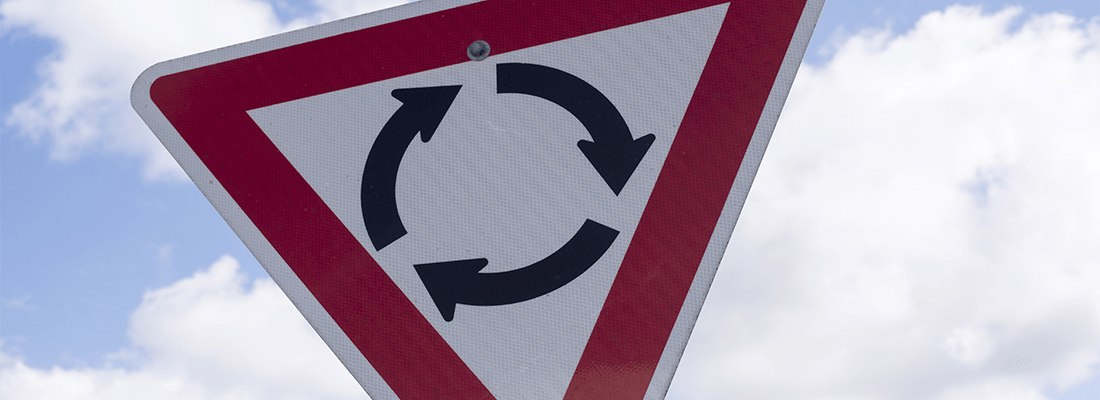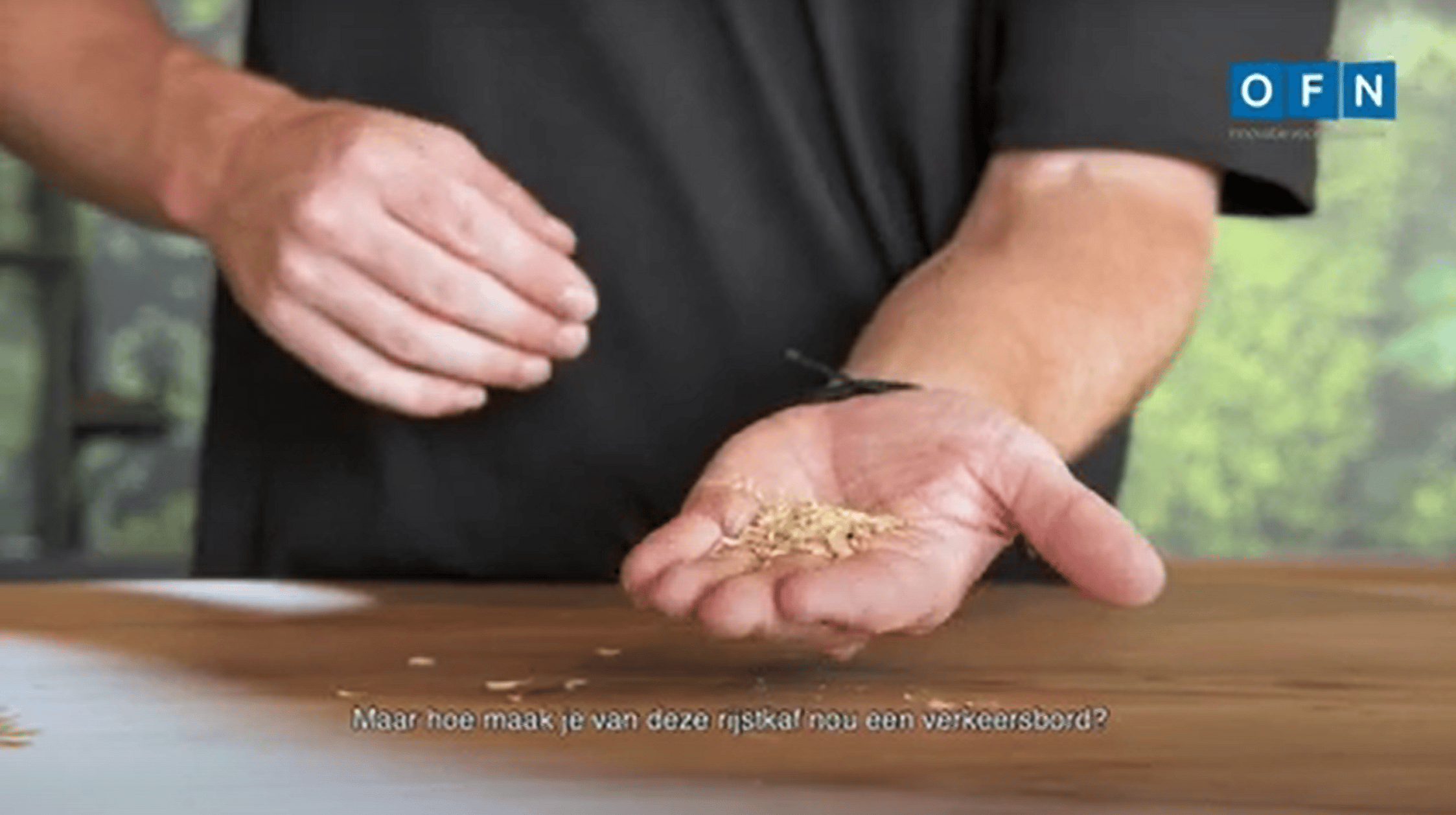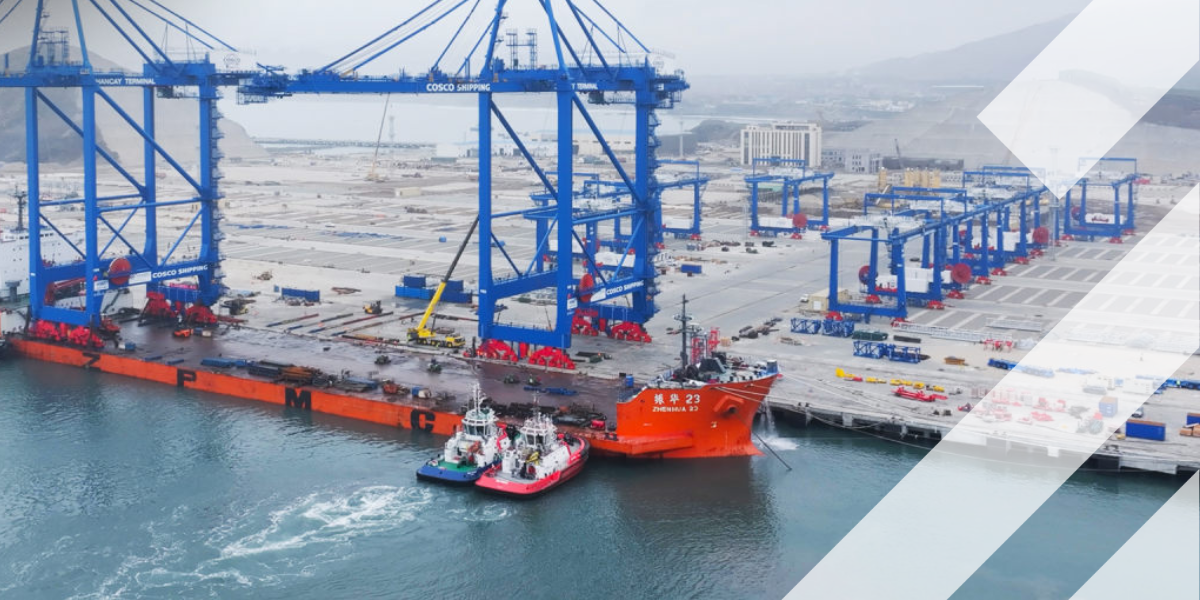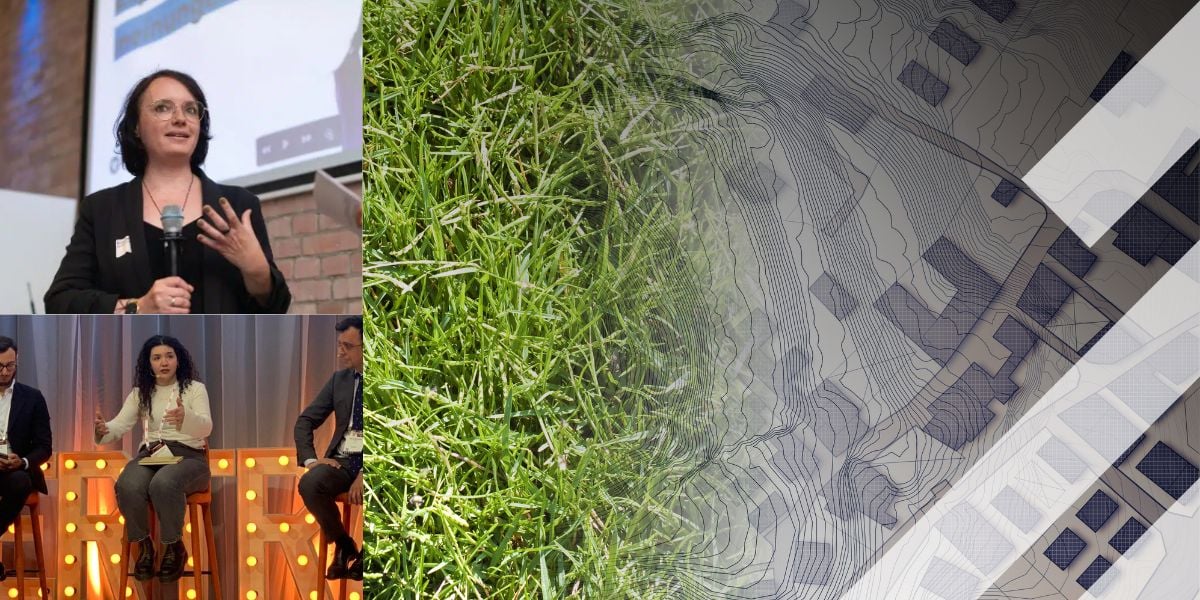Round and round: How to speed up circular mobility?
Everyone understands the need for sustainability, the urge to improve the environment and find mobility solutions that are environmentally friendly. How can we make the change by taking action instead of just having ideas and going around in circles? In this article we discuss three examples of entrepreneurs in circular mobility.
From plastic waters to plastic roads.
According to the Plastic Soup Foundation, we produce 400 tons of plastic globally per year of which some 30% is in use. Of all plastic that is produced at present, 9% is recycled, 40% is subject to controlled dumping, 14% is burned (controlled), and 32% ends up in the environment (this includes uncontrolled burning). 40% of all plastic products have become trash within a month.
Anne Koudstaal (33) is the inventor and Director of Product at PlasticRoad and member of the Sustainable young 100 in the Netherlands. Born in an area built on peat surface, he ended up studying water management. After two years working in the area of infrastructure and sustainability, he started at road construction company KWS (VolkerWessels) in 2012. His mission was to combine water management with asphalt. ‘With increasing carbon emissions, waste and pressure on our roads we need to change that same road, literally and figuratively.’
Roads of Lego or plastic cups.
‘We listened to the problems faced by road builders and clients, such as water management, cables and pipes, and subsoil settlement. Our new road had to be modular, fully circular, plug-and-play, offer space for cables, pipes and rainwater.’ That was the starting point to start looking for the right material to build this concept with. Anne and his colleague Simon proposed plastic. Interesting material, however not very sustainable. What about recycled plastics?’
It took a lot before the idea got the right traction within the company and everyone saw the big upsides of the PlasticRoad, but in 2015 the concept PlasticRoad was launched. From that moment on the team was bombarded with piles of messages from individuals, governments, the media and potential partners from all over the world. Together with new partners Wavin and Total they decided to go with recycled polypropylene. In 2018 the first PlasticRoad pilots consisting of two 30-metre stretches of cycle track in the Dutch towns of Zwolle and Giethoorn, were installed. Each built out of 100 kg of plastic waste that is the same as 218,000 plastic cups!
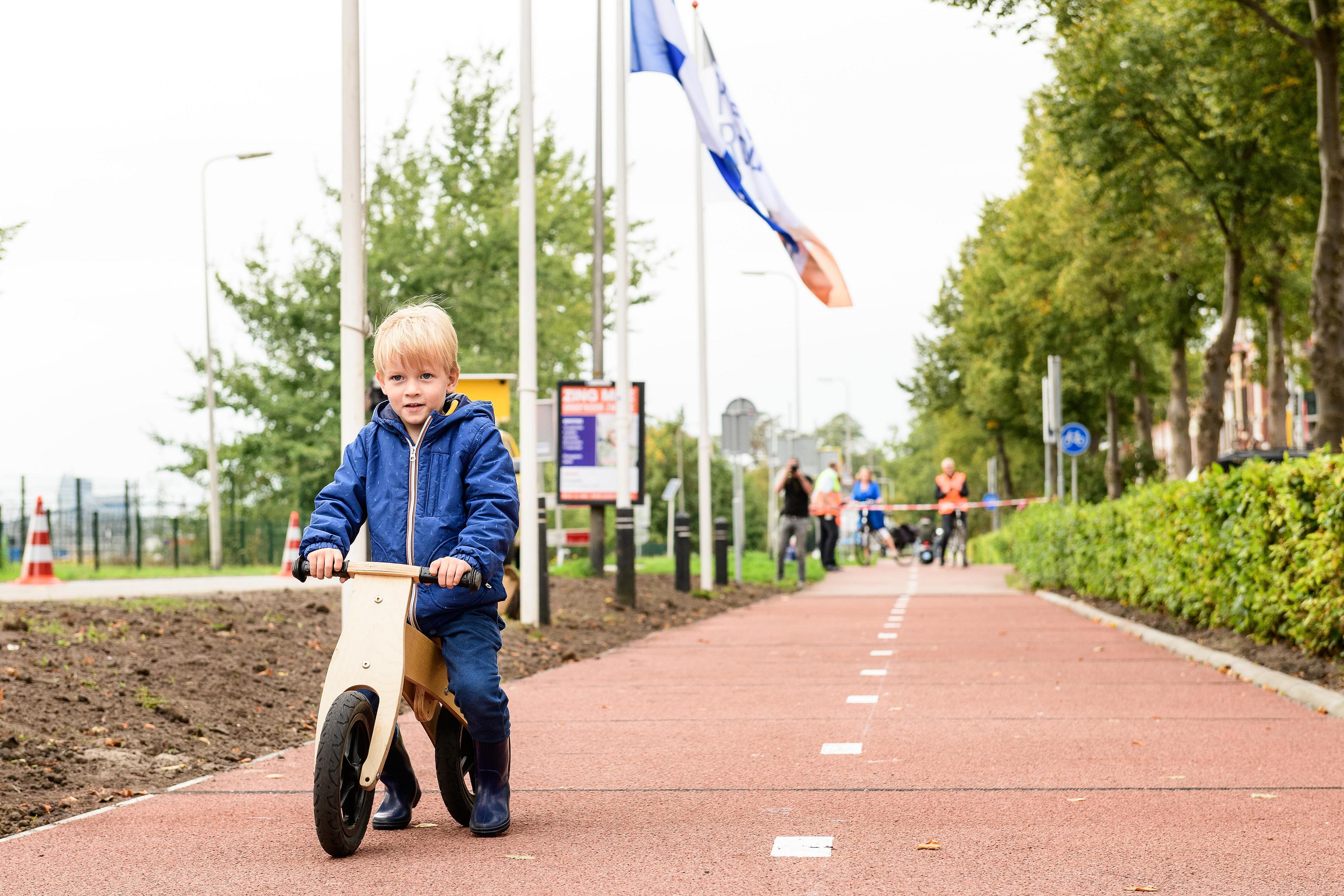
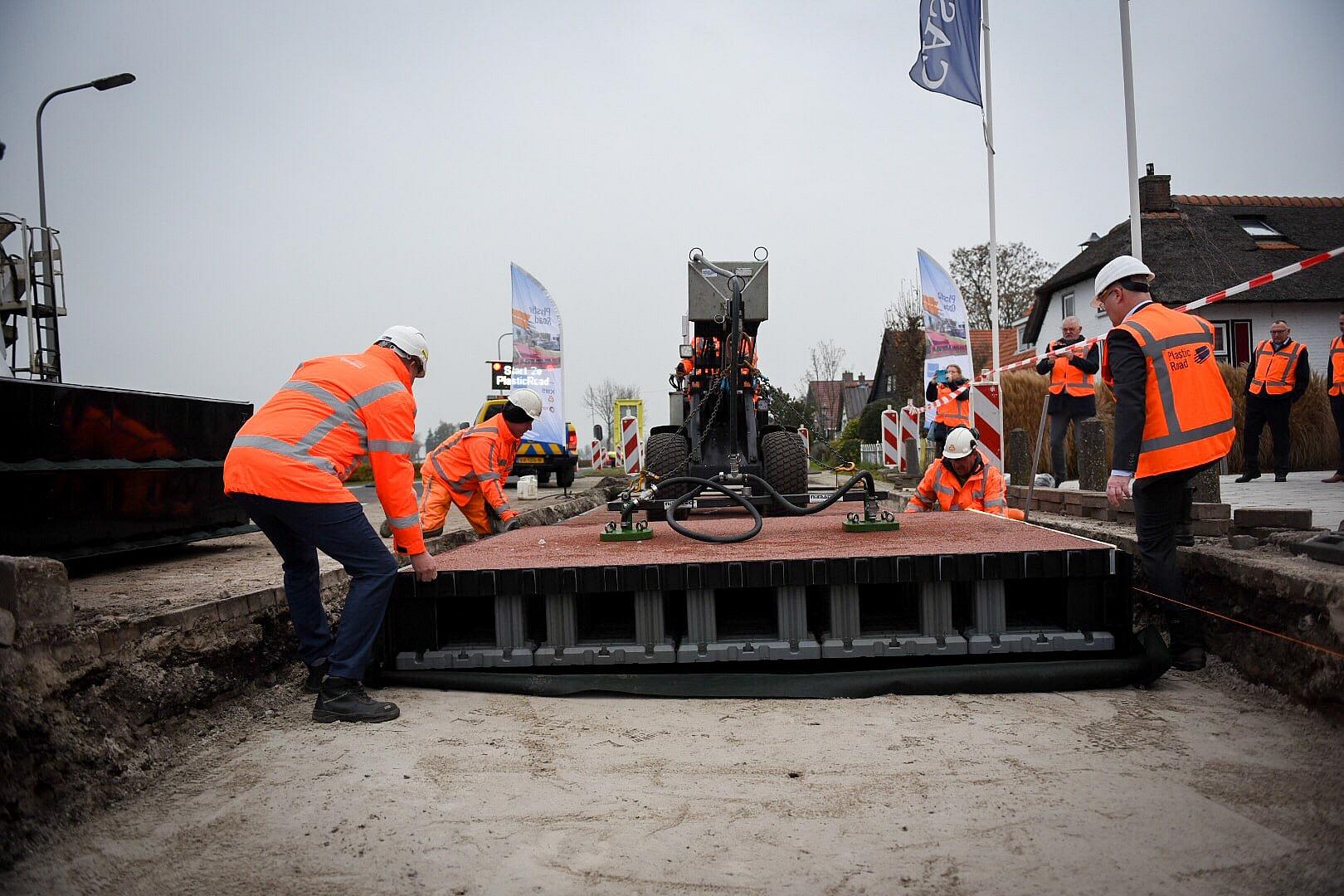
Recycled plastic offers a lot of benefits. It is much stronger than asphalt and more flexible than concrete. The PlasticRoad stores water to feed the ground below. The ultra-light-weight design offers room for cables and pipes. This makes it easier to combine with water management, cables and sewerage. It even resists tree roots. The results are promising. The lifespan of a PlasticRoad is three times longer than of conventional roads, reducing diversions due to roadworks. In addition the modular design drastically cuts maintenance time. The production process is cleaner and initial calculations indicate that transportation during installation is cut by 85% compared to conventional road construction.
‘We give waste a second life and a third and a fourth etc. We reduce carbon emissions for a cleaner living environment.’
'We will be able to deliver the first industrially produced PlasticRoad in 2021 in the Netherlands. After several successful pilots, we are now ready for our commercial launch. Then PlasticRoads will be suitable for cycle paths, sidewalks, parking spots and school yards. Our goal in 2021 is to recycle at least 77,100 kg of plastic waste, save 459,360 kg of CO2 and reduce a staggering amount of 3,909,125 kg of new materials being used for road building. We are now looking for governments that are willing to help us in achieving these goals together. Our dream is even bigger: not to be able to produce PlasticRoads anymore, because there is no plastic available.’
Car tyres are remanufactured; what about bicycle tyres?
Globally 800 million car tyres become waste. It can take decennia before a tyre is endured and the tyre exists of scarce raw materials. 42% of the microplastics ending up in our waters come from car tyres. Since 2006 in Europe it is no longer allowed for tyres to end up at a garbage dump. They have to be recycled in an environmentally friendly way. Some end up in Africa, some are being recycled into grains for sports fields, infrastructure or carpet. However, a lot of rubber is being burned. Luckily, the University of Twente succeeded in extracting black carbon from the tyres. Good developments around car tyres, but what about bicycle tyres?
With over 22 million bicycles in the Netherlands you can imagine how many tyres are used and thrown away. Young entrepreneur Marianne Vollebergh (28) started to work at Swapfiets in 2017. At Swapfiets you can subscribe to a bike from 16.50 euros per month. If the bicycle is broken or has a flat tyre, Swapfiets will ‘swap’ you a new one within a couple of days and the old bike is being repaired.
The most common problem is a flat tyre. Yearly ten thousands of tyres are being replaced based on their current 200,000 active members. Although Marianne really enjoyed her job, at some point she felt a bit ambivalent to put so much effort in increasing the number of bicycles. But where to start and how to motivate the company to make this a priority while a company is experiencing such growth?
She wanted to find a new destiny for those tyres and started her own company called The Bin. ‘Swapfiets became my first customer. Together with a designer I started the process to recycle inner tyres into a fancy bag for employees of Swapfiets to buy. However, the first designs existed of one big black piece. I discovered a lot of plastic banners no longer being used because of an old logo and I added this to the design of a weekend bag.’ This was a great success and gained awareness. The pilot showed that people were interested and it made Swapfiets’ Richard Burger very proud: 'Without the Bin, Swapfiets was not able to complete the zero waste challenge internally. The outside-in perspective and network made Swapfiets realise its zero-rubber waste targets within a record time of three months.’ Marianne is now trying to sell the bags in shops.
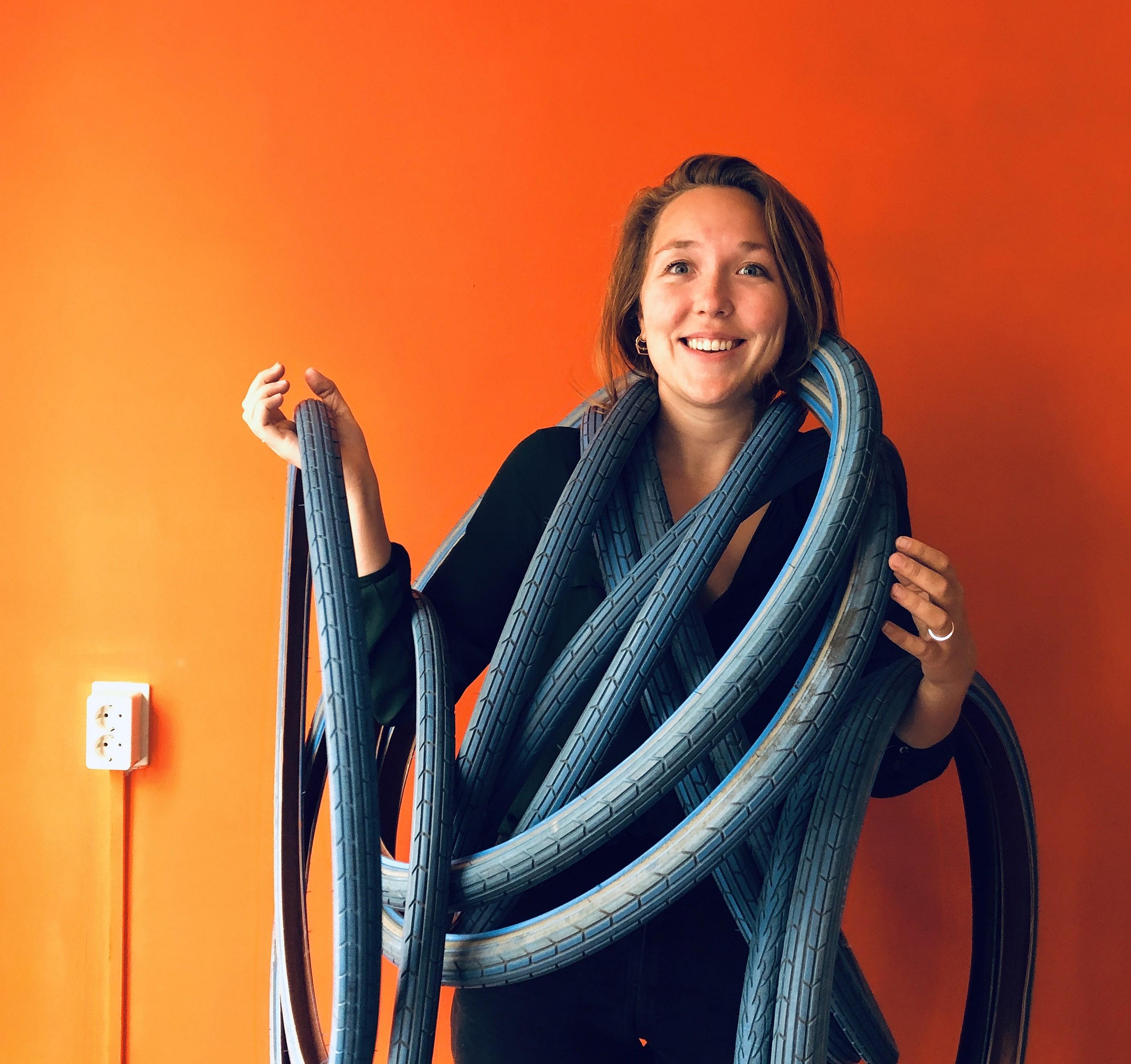
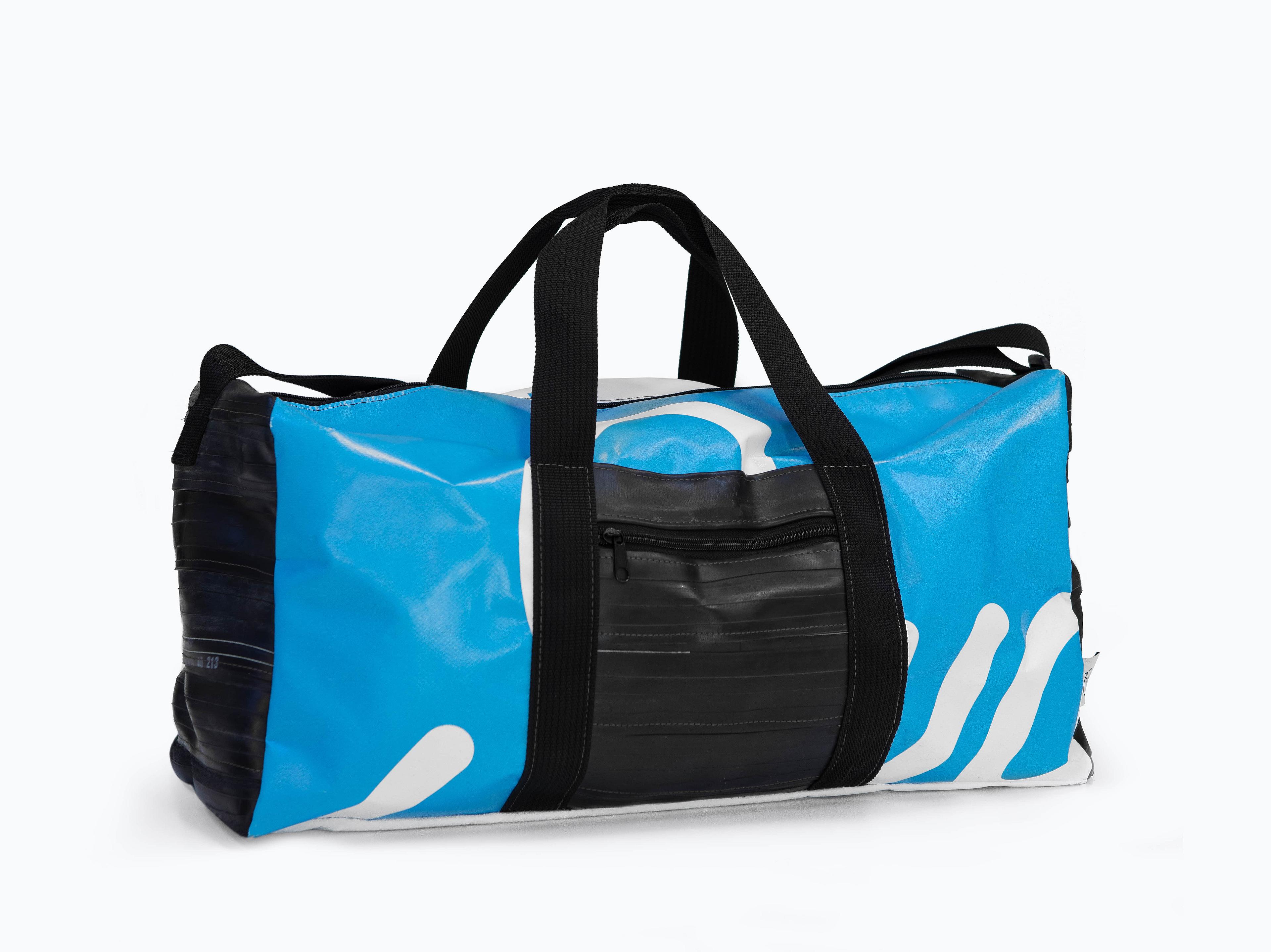
‘The problem lies in the fact that no one is owner of these tyres and no one is being held responsible for wasting them.’
She, however, was not yet satisfied. ‘The big challenge was to make this scalable. How can we really close the loop and make sure we had zero waste? In addition carbon black materials and rubbers are very pollutant. Why can’t we produce new tyres from old ones? I spoke to recycling companies, but those tyre recycling companies remanufacture 100 tons per day. So either the volume is too large or too small. The biggest problem, to me, lies in the fact that no one is owner of these tyres and no one is being held responsible for wasting them.’ According to European law car tyres have to be recycled in an environmentally friendly way. ‘For every new tyre a manufacturer pays 1.50 euro to RecyBEM to organise the recycling process logistically. This should be similar for bicycle tyres.’
The next challenge that came up is the outer recognisable blue tyre. Around 8,000 covers per year of waste. It consists of different materials from the inner tyre; it is much thicker and rougher. And it is different from the car tyre. On social media Marianne received loads of response and ideas. From belts, lamps and other furniture to bumps. However, this again is not her aim. ‘A new belt is nice to have, but not a necessity. And again it is not scalable. So I am currently looking for more companies in the tyre chain to work with in order to increase the volume and learn from car tyre remanufacturers. Hopefully on a European level.’ Since the outbreak of Covid-19 cycling levels in a lot of big European cities increased by 30%. So the need to find a circular solution for these tyres is expected to increase.
Round and round thanks to traffic signs of rice husk.
Where would a cyclist be without a road and..a traffic sign. Most traffic signs are made out of aluminium. A very pollutant product. Part of the Circular Economy target in 2050, the intermediate target by 2030 is to reach 50% less use of primary raw materials (mineral, fossil and metals). Until now bamboo has already proven to be the best sustainable alternative to produce traffic signs. It is very strong material and when it needs to be replaced, the old sign is burned and the energy reused. But what about the left over materials?
‘You need 10,000 traffic signs of aluminium? Than OFN is not your party.’
Dutch company OFN has been producing outdoor furniture in public space for 20 years. Director Commerce Hetty Lemmen explains: ‘Since 2017 sustainability became the core part of what we do. Both in production and our organisation. We drive electric vehicles and have solar panels. You need 10,000 traffic signs of aluminium? Than OFN is not your party to go to. We believe in circularity and sustainability. From benches made of local wood and a smart garbage bin which contains seven times more to a parking garage of bamboo layered design and a B-composite poles.’
Two years ago Textline approached OFN with a new idea. The fully 100% circular traffic sign. Together they designed a circular and sustainable traffic sign made of residual material rice husk (60%), rock salt (22%) and mineral oil (18%).’
(in Dutch)
Rice husk? Rice husk is a left-over product which protects the rice seed from fungus and humidity. It has been used for construction before the industrialisation in the 19th century. Due to the discovery of new raw materials, rice husk was replaced. While rice production increased and 90% of the left over rice husk remained unused. Now this product has been given a new destiny.
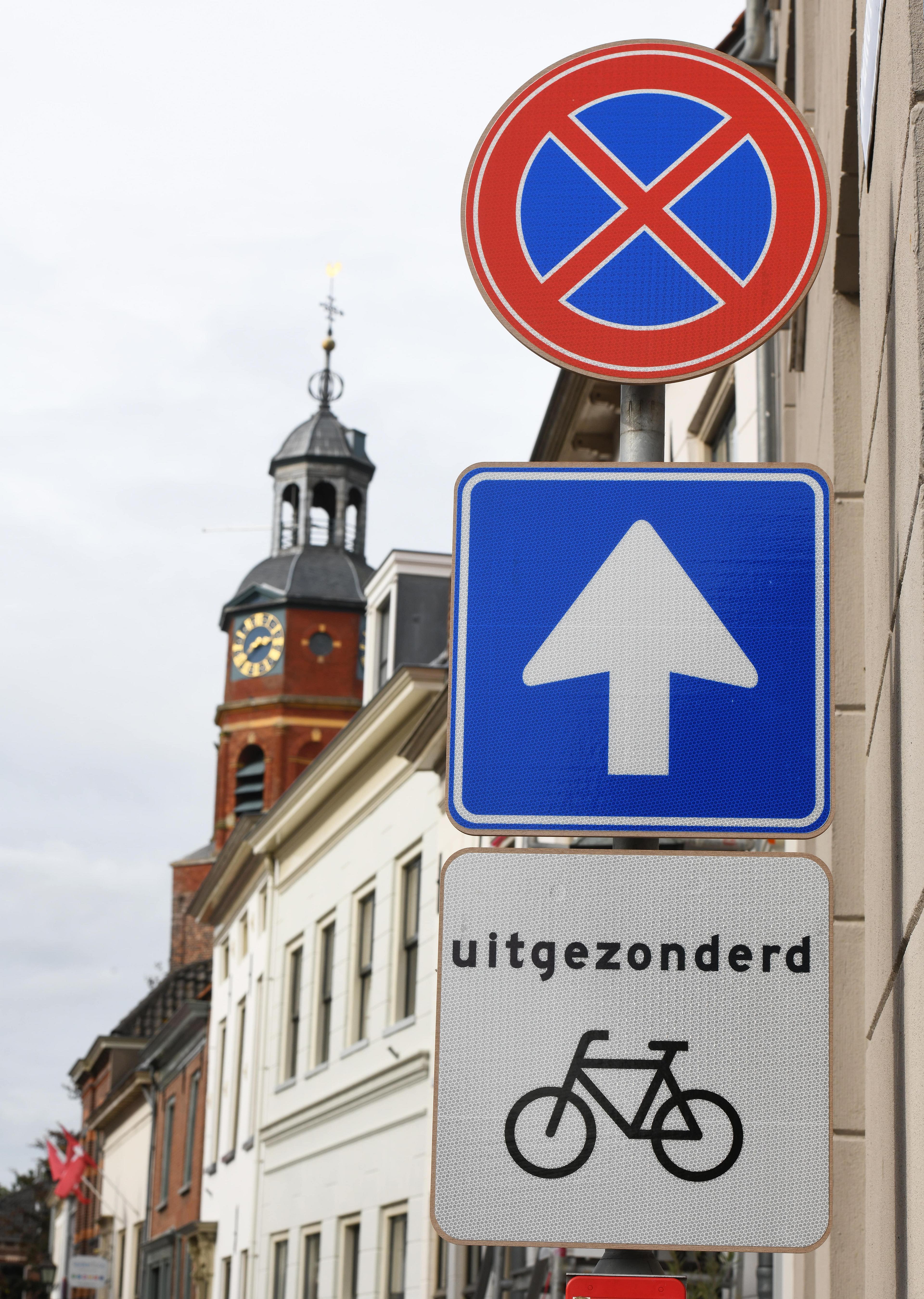
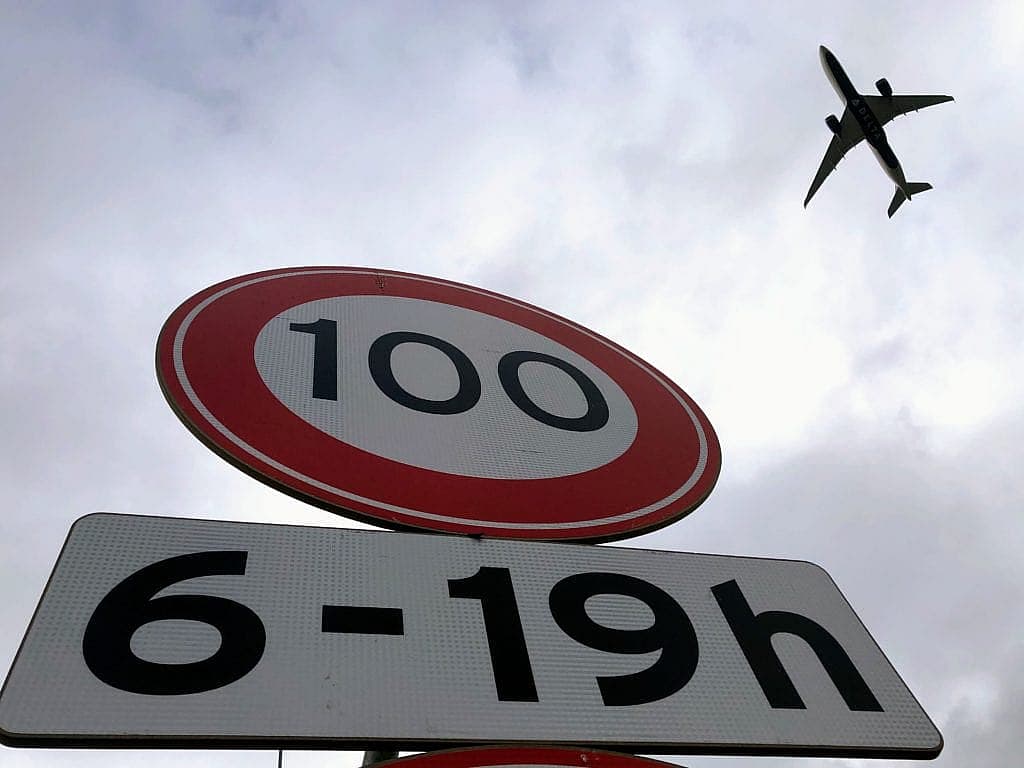
‘Our big opportunity came when the maximum speed changed from 130km per hour to 100km per hour at the start of 2020. Rijkswaterstaat was interested in 250 of our signs. However, it took a lot of time to get the signs fully certified. Luckily for us, we were allowed and managed to replace the signs within a couple of months. In case we would not get our certification, we would remove them again. We succeeded in getting the certification later this year.’
‘A behavioural change is on its way.’
‘We were very pleased to see a growth in demand from local governments. I hope we will start to understand the sense of urgency of sustainability and focus less on the costs. Most tenders run for a period of 10 years. In order to comply with our goal, you need to start now. A behavioural change is on its way. After every tender we submitted, sustainability becomes one of the requirements in the next. However, people still tend to find bio or sustainable products expensive, because we compare it to non-sustainable products that have experienced a price curve for 40 years. We should compare it to other new products instead.’
‘If people chose a cheaper non-sustainable product over ours, we think of it as their loss; not ours. This circular traffic sign is a symbol of what we believe in. It can last for 80 years. After damage or the end of the signs life, it can be 100% reused and fully used for a new traffic sign. The foil will be recycled into rain boots. The circle is complete!’
Do you have an innovation, research results or an other interesting topic you would like to share with the professionals in the infrastructure, traffic management, safety, smart mobility and parking industry? The Intertraffic website and social media channels are a great platform to showcase your stories!
Please contact our Sr Brand Marketing Manager Carola Jansen-Young.
Are you an Intertraffic exhibitor?
Make sure you add your latest press releases to your Company Profile in the Exhibitor Portal for free exposure.
Get up to speed on the mobility industry - our newsletter straight to your inbox!
